Patience, Websters defines Patience as being able to tolerate delays without becoming annoyed or anxious. I think of it as one of Sailings Essential Skills and, one of the hardest sailing skills to learn! The old timers, in the days before engines had it in abundance and we modern day sailors need to take a page from their playbook.
Unfortunately, today many people suffer from what I call the “Amazon Syndrome” (AmS) which is characterized by the thought that anything you want can be had instantly, or tomorrow at the latest just by asking Siri or pushing a button.
The fact is suffering from the AmS is not conducive to enjoying or having a safe, comfortable passage on a small boat! At the very least you will be disappointed in some or all aspects of your cruise, on the opposite end of the scale, it can cost you your boat or your life!
For the sailor this means accepting that one might need to wait several days or more for weather conditions that are conducive to leaving port, be willing to heave too and await safer more comfortable sailing conditions once at sea and perhaps most importantly be willing to wait for daylight or even safer conditions to enter port at the end of your passage.
It also means that as sailors we have to accept the fact that we are not going to get anywhere very fast. We have to accept the fact that we can only sail as fast as our vessels length allows and that once at sea no matter what the weather or sea conditions we experience there isn’t anything we can do outside of good seamanship, except, accept the conditions and be patient!
Departure Patients
Waiting for the right weather conditions to depart ranks as #2, we will talk about #1 in just a moment, on the patient trying list of passage problems, especially if you are on a time schedule like a two week vacation cruise, or have crew with purchased return ticket deadlines.
The easy solution is “Never sail to a Schedule”! However, I get it, many times one must for any number of valid reasons. Tactics to avoid sailing to a schedule include;
Give any crew who will be flying home at the end of a passage, an arrival date several days or more later than you really expect to arrive, the worst that happens is you arrive early and everyone has a few days of down time or if you just arrived in the islands, a few days to enjoy the area.
-Avoid firm departure dates, when it comes to sailing there is no such thing as a firm departure date, there is dates after which a passage cannot be undertaken because there isn’t enough time left but, when it comes to departure dates they are really just theoretical. Setting a firm departure date more than 5 days in advance is likely going to lead to disappointment when the date comes and the weather is wrong or the boat isn’t ready
So, how do you set and keep a departure date without running out of Patients? A couple of weeks before your likely departure date begin studying the weather from all the sources you can find for your departure point and along your intended route. Your goal in doing this is to get an idea of weather patterns, to see what weather source(s) are the most accurate. In doing so you will begin to get an idea of just when the conditions will be right for departure.
Look for a Weather Window that will give you good weather for departing and a couple of good days of sailing to let the crew adapt to being at sea.
As weather forecasts are rarely very accurate beyond 3-5 days, once at sea you will just have to adapt and accept what Mother Nature has to offer. That said, if there is a storm at sea, even one over a 1000nm away, but maybe moving in your direction, it may be prudent to delay your departure time until the system has made its intentions firmly known. This is especially critical for those making passage plans during the North Atlantic Hurricane Season.
As a case in point, in September of 2019 we were in Halifax Nova Scotia, provisioning for our passage back to Boston Massachusetts. For the past couple of weeks we had been enjoying a pleasant sail along the Nova Scotian coast from the Bra’s d Or Lakes and were looking forward to a few days down time in Halifax before our departure to Boston. The evening before our departure date for Boston we were sitting in the Royal Nova Scotian Yacht Club bar having dinner when the TV showed a picture of Hurricane Dorian, just beginning to move away from the Bahamas and directly north! Our reaction, no, we aren’t in a Hurricane prone area, Dorian isn’t coming here, well, surprise, Dorian was, though still several days away, and too close to our route home and too close to us in Halifax.
Now Halifax is not a good spot to be for any kind of storm. The harbor is wide open to the south and both bays that make up Halifax Harbor are surrounded by hills that will funnel the wind. Our immediate goal, to find a safe place to sit out a Hurricane! With nearly 5 days warning we immediately let everyone at home know we were delaying our journey home and in the morning moving to a Hurricane Hole in St. Margrets Bay.
The next morning, with the storm still several days away, we moved to Schooner Cove at the very top of St. Margrets Bay fully expecting other boats to also be moving here and hoping we would arrive early enough to stake a spot and deploy our anchors before the crowd arrived.
As it turns out not only did we arrive in time to get our primary anchor down and several others prepared for the storm, but we had time to strip off all our sails, canvas and gear on deck, meet all the folks who lived around the anchorage and visit with the only other cruising boat we would share the anchorage with.
Dorian came, blew hard, as hurricanes are prone to do while we sat snuggly in a nearly perfect Hurricane Hole. Once Dorian was left we put everything back in place and a day later sailed on. Our plans to head straight to Boston some 4 days away thwarted by a new weather system we opted for a couple of days of exploring Lunenburg NS while we waited for the winds to blow fair again.
By being Patient, we safely sat out a Hurricane and ended up, though a week late, avoiding a hard beat into the prevailing Southwesterlies, instead having a beautiful 4 day reach back to Boston.
Yes we got home later than expected but being “Patient” paid off!
At Sea
Once at sea and beyond a point where returning to port is no longer an option, you have to accept whatever weather Mother Nature sends your way.
Your safety valve, whether for a rest, to fix a hot meal, to figure out our position, to wait out heavy weather a hundred miles in front of you or to keep the vessel safe in heavy seas, Heave Too.
During the normal sailing season anywhere in the world it is rare to have to wait for more than day for heavy weather to pass in front of you or to pass over you. Heaving too means you are not going to be making progress towards your destination, it means you might be late getting home or to your next port but it does mean you will arrive, again be patient!
In the days before Satellite Communications and before I owned a Single Side Band radio I would always give my Reporting Party or family a padded arrival date that was, depending on the distance to be sailed, as much as a week or sometimes two beyond my expected arrival date, this gave me plenty of time to get to my destination without unduly worrying anyone or having someone initiating a Coast Guard Search.
Today with Satellite Communications and tracking we no longer have to worry about arriving a day or so late as we can communicate our schedule to those who are important.
Arrival at your destination or bail out port
As you near your destination or maybe a “Bail Out Port” , having Patients is more important than ever! If you are lucky enough to arrive during daylight hours and in good weather, you still need to check and double check your position and navigational hazards.
If on the other hand, you are arriving at night and/or in heavy weather conditions, with or without a Chart Plotter, the prudent thing to do is Heave Too early and far enough off shore on a safe tack that takes you out to sea. Many, and I mean many a boat and hundreds of lives have been lost because skippers attempted to enter a strange port at night in heavy conditions.
It has always been an unwritten rule that even in good conditions “one should not attempt to enter a harbor they are not intimately familiar with in the dark”. It is just not prudent thing to do, so, heave too, wait for daylight.
In heavy conditions at night, entering an unfamiliar harbor is an invitation to disaster and probably one of the hardest decisions a skipper must make is to delay entering until daylight. Your crew is seasick, cold, wet, hungry, tired, wanting nothing more than what the lights surround a harbor represent, someplace warm, someplace dry, someplace not moving, warm food, but as Skipper you have to say, NO, heave too, we will go in once daylight arrives. Your crew will be very unhappy, they may beg, give you the evil eye, but they will be alive to do so.
As I said, a very hard decision, but the right one!
Light Air Sailing
Lastly, Sailing in Light Air, if one is Patient, has a good light air sail like a Drifter, then one can enjoy some of the finest sailing there is, sailing across a calm sea in light air. You are not going to go anywhere fast, you may only be moving at 2 knots or so, but you will be moving, the boat won’t be slamming, you won’t be heeling, in fact if the crew doesn’t look over the side to see the hull moving through the water they won’t even realize they are moving.
But, to enjoy sailing in light air, you must be patient, an Essential Skill!
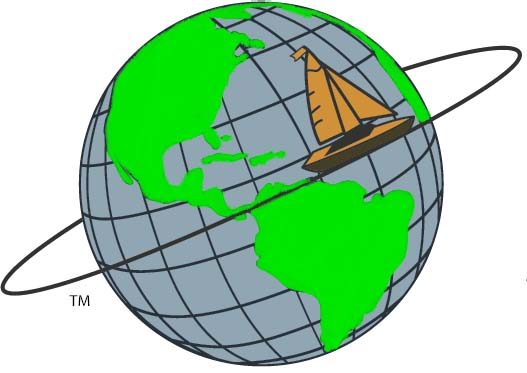


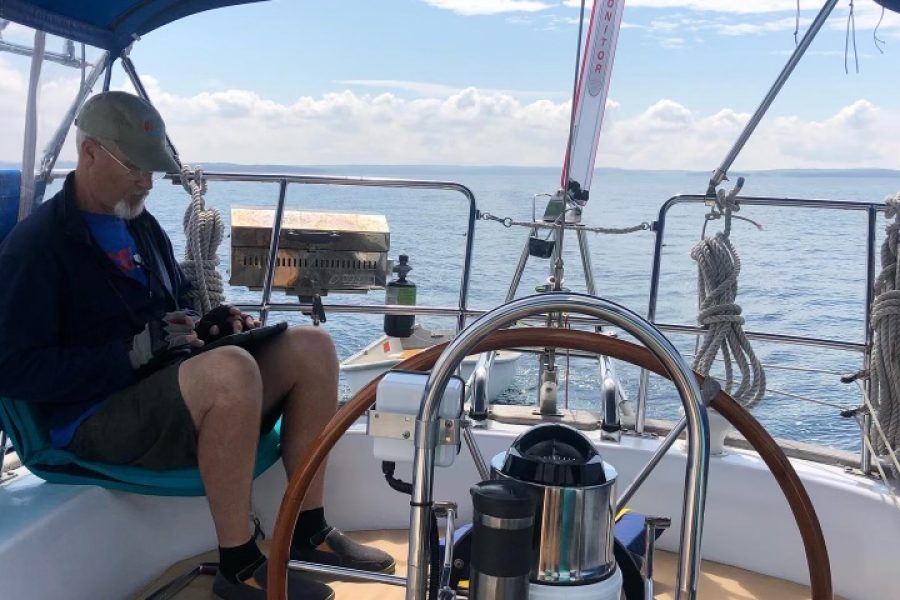
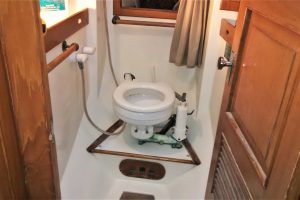
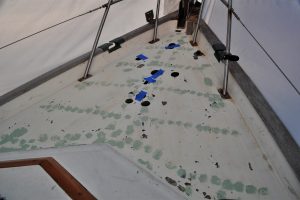
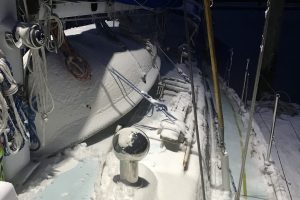
Leave a Reply
Your email is safe with us.